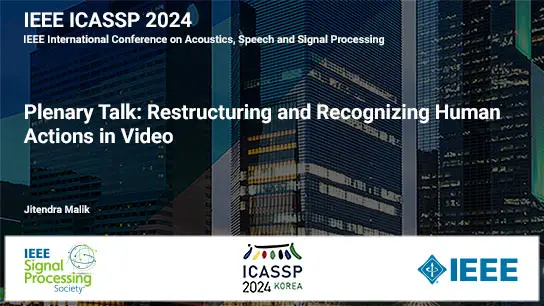-
Members: FreeSPS
IEEE Members: $11.00
Non-members: $15.00Length: 1:18:37
Plenary
11 Oct 2023
The James Webb Space Telescope (Webb) is currently operating ~ 1 million miles from Earth, at the second Lagrangian point. Webb’s infrared imagers are designed to look back into the early universe almost 13.5 billion years ago. Since the first observations were released in the summer of 2022, Webb has continued to produce visually stunning images. The analysis of these images is changing humanity’s understanding of the Universe; rewriting textbooks. This talk will present an overview of the Webb telescope and its imagery obtained during the past year. As a deployable segmented telescope, Webb had to be aligned after launch, via an image analysis-based “Wavefront Sensing and Controls” (WFSC) process. The talk will also highlight how, starting with positioning uncertainties on the order of a few millimeters, the alignment process correctly positioned Webb’s optics to within a handful of nanometers.
Bio: Scott Acton was the Wavefront Sensing and Controls Scientist for JWST and is currently a staff consultant at Ball Aerospace and Technologies Corp., in Boulder, CO, where he has worked for the past 20 years. Previously, Acton worked in the field of Adaptive Optics for the W. M. Keck Observatory, and for the Lockheed Missiles and Space Co. Acton studied Physics at Abilene Christian University, earned a PhD in Physics from Texas Tech, and served as a post-doc at the Kiepenheuer-Institut fuer Sonnenphysik in Germany. In 2016, Acton took a year off from his job to execute the “James Webb Space Telescope World Bicycle Tour.” He currently resides in Niwot, Colorado.


